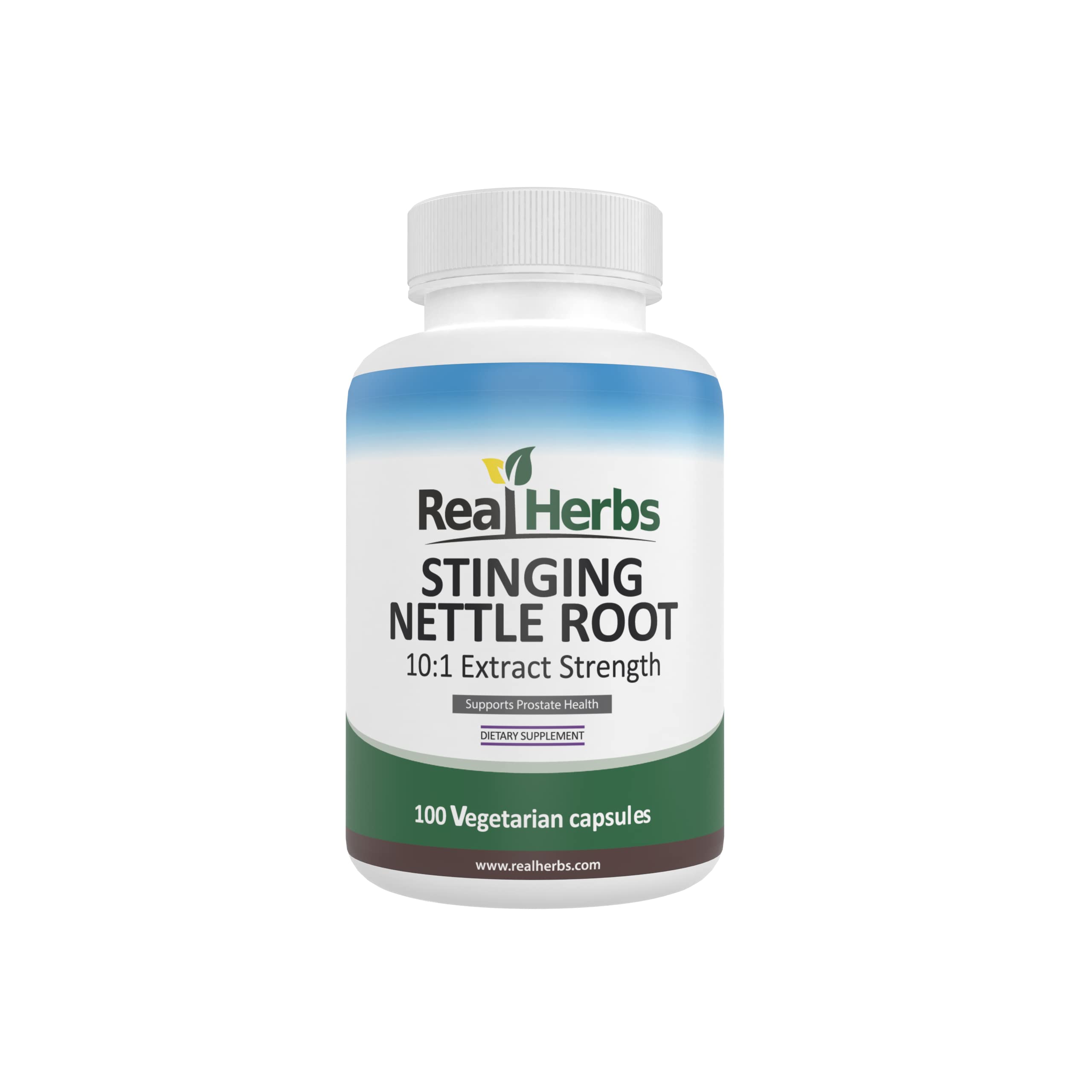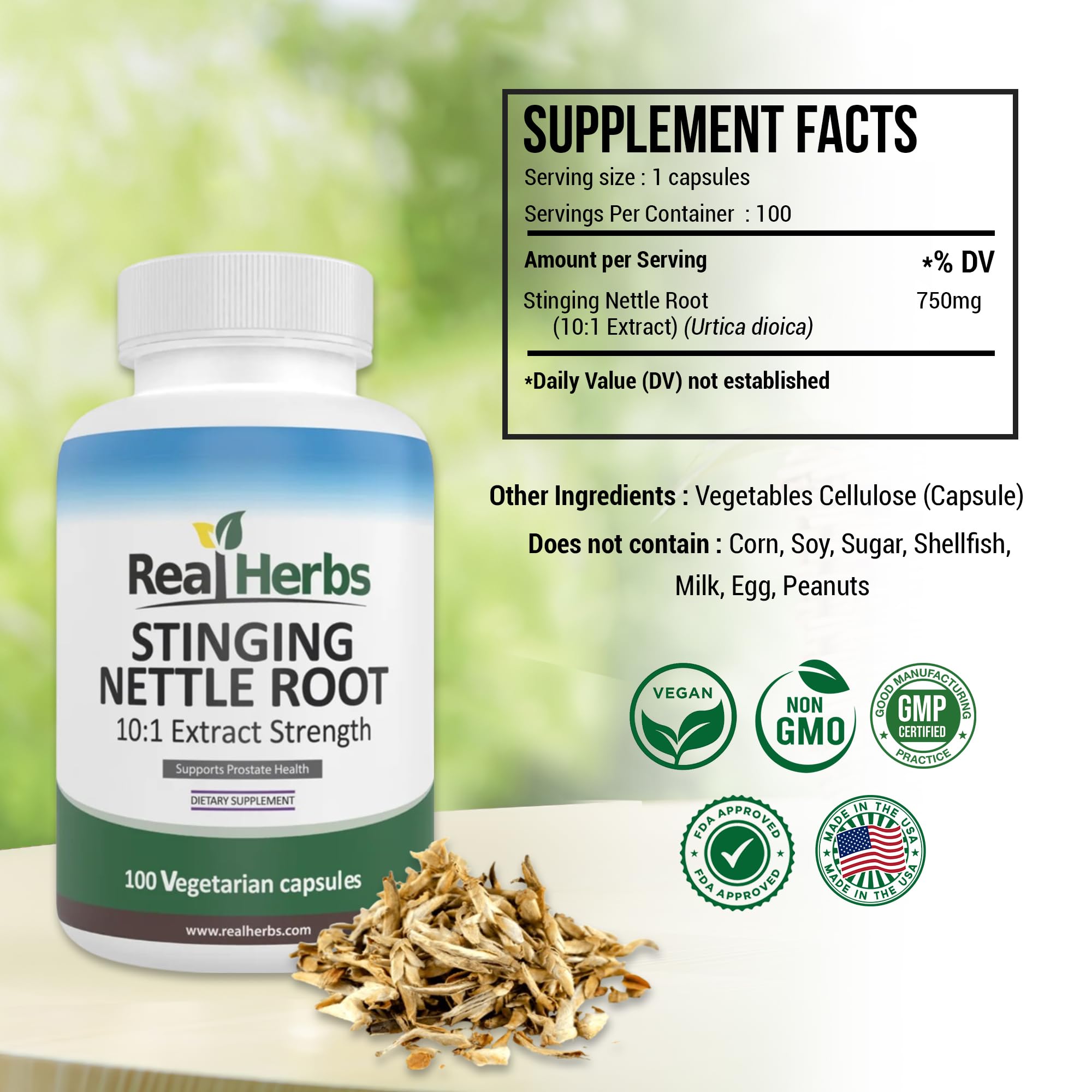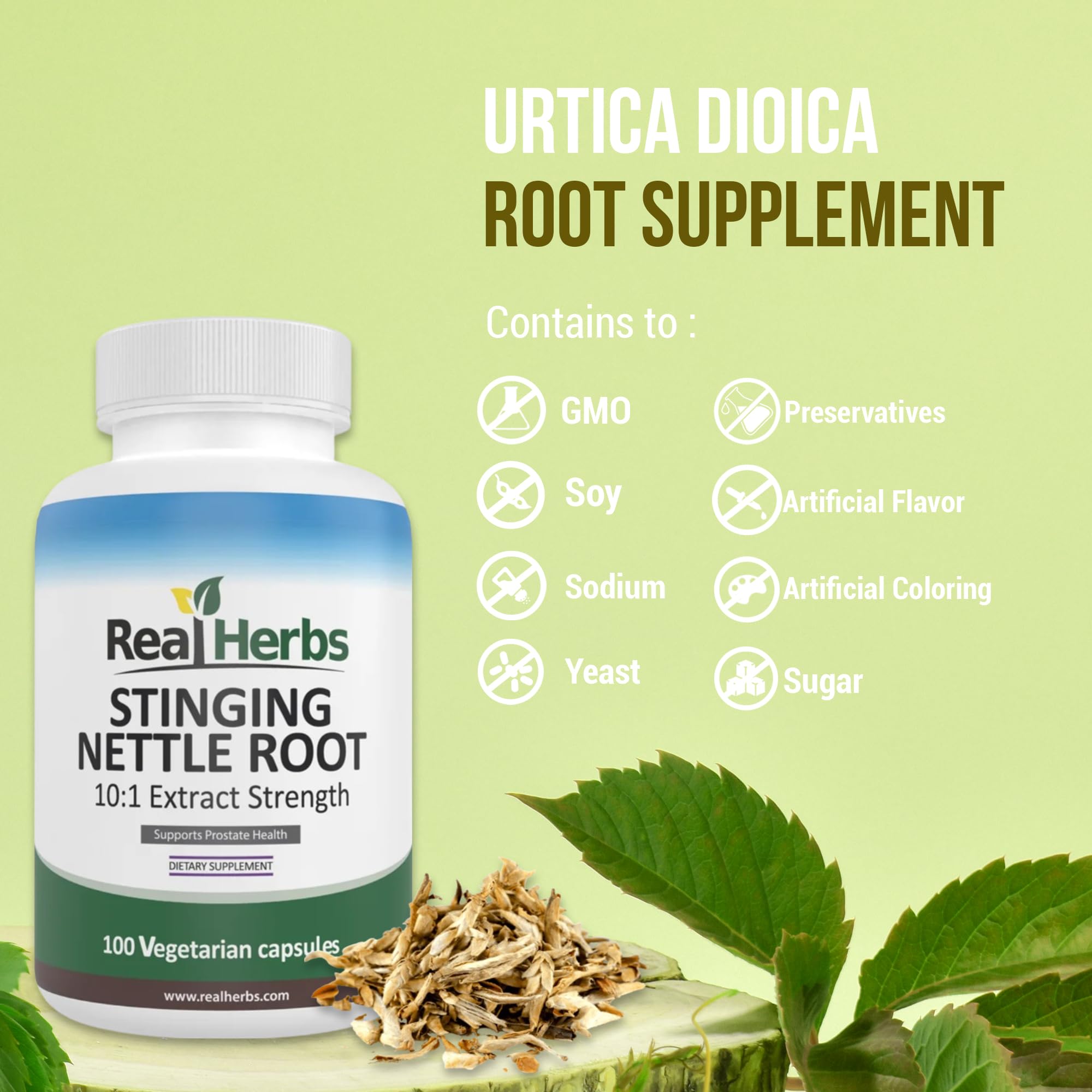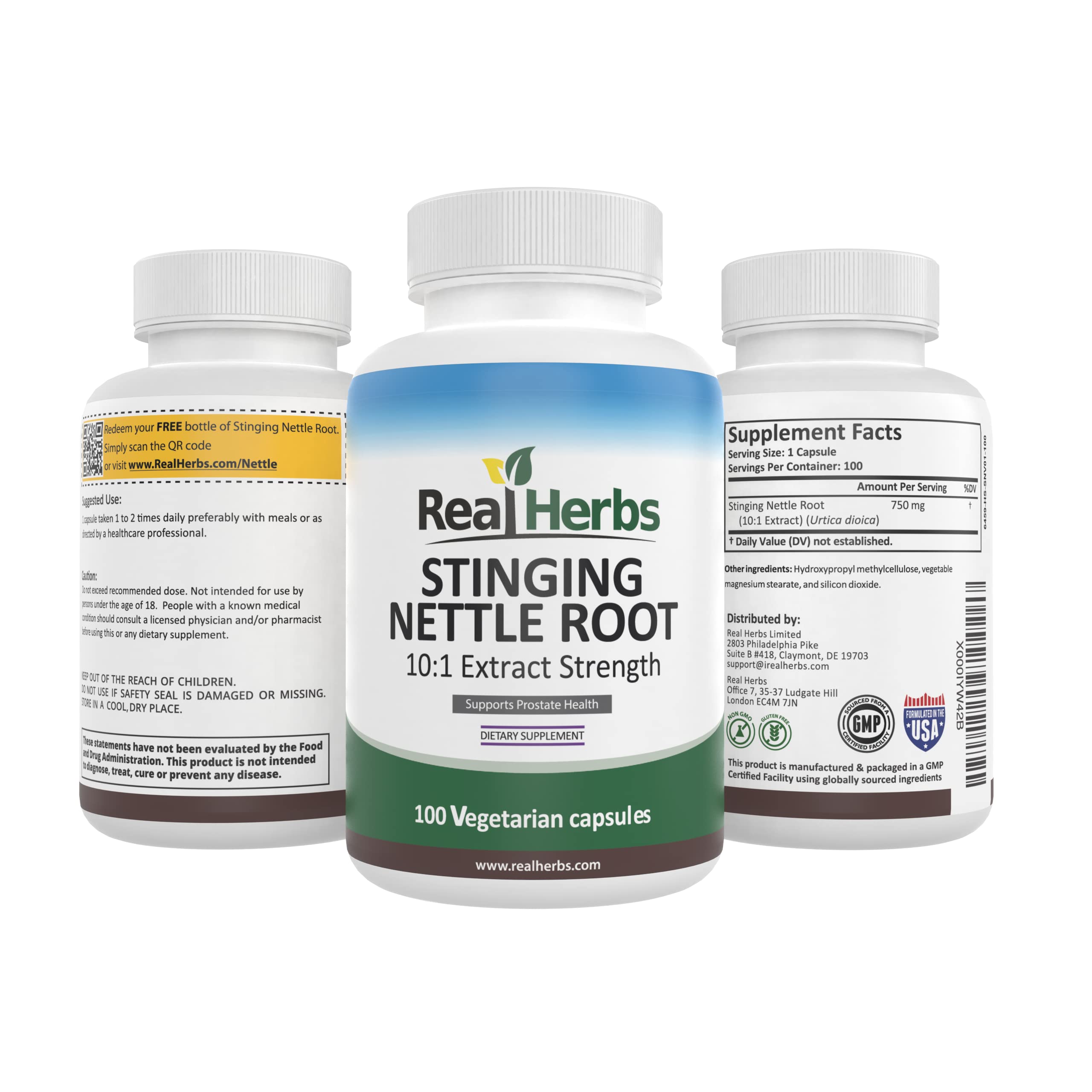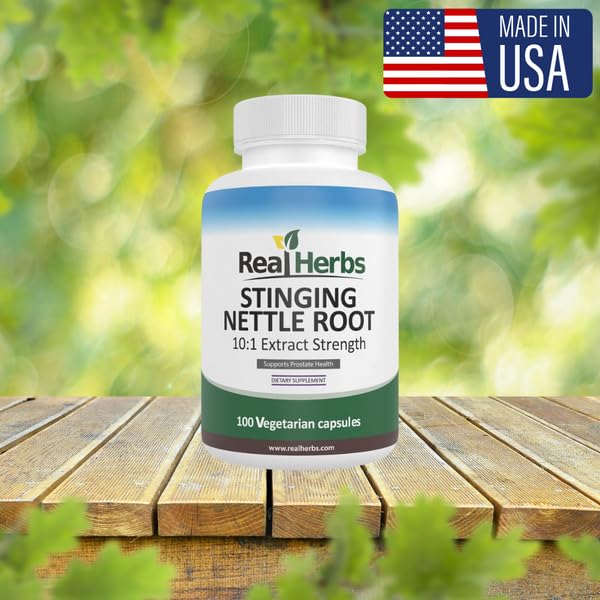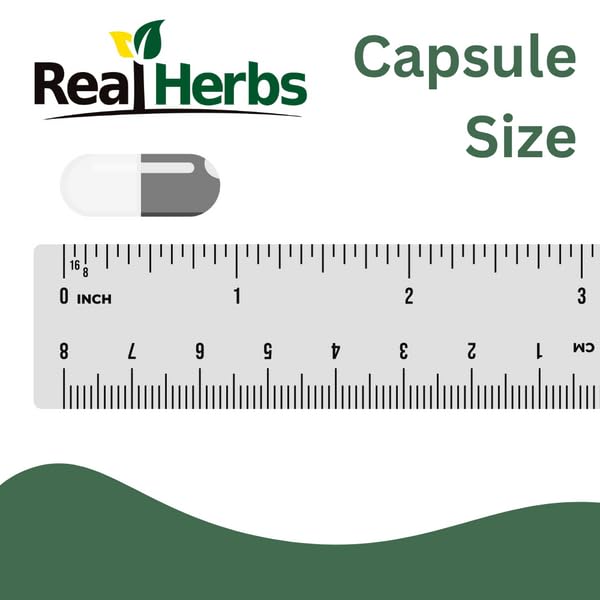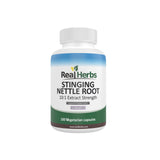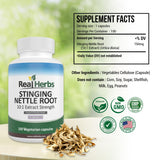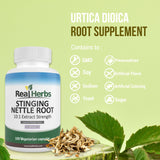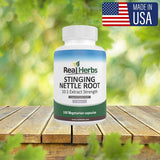Stinging Nettle Root and Environmental Sustainability: Cultivation and Conservation
Stinging Nettle Root and Environmental Sustainability:
Cultivation and Conservation
An in-depth look by Jessica Johnson, Herbal Science Researcher at Real Herbs.
Embracing Nettle's Eco-Friendly Potential
Stinging nettle (*Urtica dioica*) is renowned for its diverse health benefits, particularly its root in supporting prostate health and hormonal balance. Beyond its medicinal value, stinging nettle is increasingly recognized for its remarkable environmental sustainability. Its resilient nature, adaptability, and versatility in various applications position it as a key player in promoting eco-friendly agricultural practices and contributing to a circular bioeconomy. Understanding the cultivation and conservation aspects of stinging nettle highlights its role not just as a herbal remedy, but as a sustainable resource for a healthier planet.
This article will explore the ecological advantages of stinging nettle cultivation, its role in sustainable land management, and its potential contributions to a circular bioeconomy. We will delve into how modern cultivation practices enhance its environmental footprint and why supporting ethically sourced nettle products contributes to conservation efforts.

Sustainable Cultivation Practices of Stinging Nettle
Stinging nettle stands out as an environmentally friendly crop due to its inherent biological characteristics and the potential for low-input cultivation methods.
- Perennial Nature and Low-Input Farming: As a perennial plant, nettle grows back year after year, reducing the need for annual tilling and replanting, which helps prevent soil erosion and maintains soil health. Its robust nature means it generally requires minimal external inputs such as fertilizers and pesticides, aligning with sustainable farming principles [3]. This characteristic makes it well-suited for cultivation practices aimed at reducing environmental impact.
- Adaptability and Soil Remediation: Stinging nettle is highly adaptable and can thrive in various soil types and environments. Notably, research indicates that it can even be cultivated on contaminated soils, with organic amendments like digestate significantly improving its growth and fiber production. This highlights its potential for phytoremediation and sustainable land management in challenging areas [6].
- Cultivation Technologies: Modern approaches to nettle cultivation, from open-field farming to advanced hydroponics, are being explored to optimize yield and ensure consistent quality while maintaining environmental responsibility [2, 4]. These technologies aim to produce high-quality biomass with consistent metabolite content efficiently.
Nettle's Role in a Circular Bioeconomy
Beyond its use as an herbal supplement, stinging nettle's versatility makes it a valuable component of a circular bioeconomy, where waste is minimized and resources are reused. Its various parts can be utilized in multiple sectors, contributing to sustainable resource management.
- Multifaceted Applications: The entire nettle plant offers diverse applications. Its leaves are used for food (rich in nutrients), traditional medicine, and animal feed. The stems can be processed for fibers, while the roots are valued for their medicinal compounds [1, 5].
- Waste Reduction and Resource Cycling: Nettle can be integrated into sustainable circular systems where its biomass can be used for various purposes, including bioenergy, bioplastics, and even as a natural fertilizer. This reduces waste and promotes resource cycling, aligning with circular economy principles [5]. The rich biochemical composition of nettle roots, for example, makes them valuable for various applications [1].
- Low Environmental Footprint: By providing multiple valuable outputs from a single, low-input crop, nettle cultivation contributes to a reduced overall environmental footprint compared to crops requiring intensive resources.
Conservation and Ethical Sourcing of Stinging Nettle
While nettle is widespread, responsible sourcing is essential, especially when wild harvesting, to ensure its long-term availability and protect biodiversity.
- Wild Harvesting vs. Cultivation: Historically, nettle has been extensively wild-harvested. While wild populations are generally robust, the increasing demand for herbal products necessitates considering sustainable cultivation practices to prevent over-harvesting and preserve wild ecosystems.
- Ethical Sourcing Practices: Choosing nettle products from reputable suppliers who adhere to ethical sourcing guidelines, whether from wild-crafted or cultivated sources, helps ensure that the plant is harvested responsibly without depleting natural populations or harming local ecosystems. Look for certifications or transparency regarding sourcing methods.
- Impact on Biodiversity: Sustainable cultivation and responsible wild harvesting protect the local biodiversity that relies on native plant populations.
Benefits of Supporting Sustainable Nettle Sourcing for Consumers
For consumers, choosing sustainably sourced stinging nettle products offers multiple advantages:
- Consistent Quality and Potency: Sustainable cultivation practices, especially those employing modern techniques, can ensure a more consistent quality and metabolite content of the nettle raw material, leading to more reliable and effective supplements [2, 4].
- Environmental Stewardship: By opting for products that prioritize environmental sustainability, consumers contribute to healthier ecosystems, reduced pollution, and the conservation of plant resources for future generations.
- Purity and Safety: Sustainable farming often involves fewer pesticides and harmful chemicals, leading to a purer final product for consumers.
Conclusion: Stinging Nettle – A Sustainable Herbal Ally
Stinging nettle root, beyond its well-known medicinal benefits, embodies a remarkable capacity for environmental sustainability. Its resilience, adaptability, and minimal cultivation requirements make it an eco-friendly crop that contributes positively to soil health and diverse ecosystems. Furthermore, its multifaceted utility, from food and fiber to medicine and bioenergy, positions it firmly within the framework of a circular bioeconomy, reducing waste and optimizing resource use.
By understanding and supporting sustainable cultivation and ethical conservation practices, consumers can play a vital role in promoting not only their own health but also the health of our planet. Choosing high-quality, responsibly sourced stinging nettle products allows us to embrace the power of this underground marvel, ensuring its availability and benefits for generations to come.
Ready to experience the benefits of Stinging Nettle Root?
Real Herbs Stinging Nettle Root Extract is a premium, potent supplement designed to support healthy testosterone levels, prostate health, and overall male vitality. Crafted for purity and efficacy, it helps liberate your free testosterone, so you can enjoy enhanced energy, improved performance, and a renewed sense of well-being.
Who it helps: Men experiencing symptoms of low testosterone, seeking natural prostate support, or looking to optimize their overall male health naturally.
Why it’s safe/trusted: Manufactured under strict quality controls, Real Herbs prioritizes purity and potency, ensuring you receive a product you can trust.
All our products are backed by our 100-Day Money-Back Guarantee!
"I've been using Real Herbs Stinging Nettle for a few months now, and I've noticed a significant improvement in my energy levels and overall vitality. Highly recommend it!" - Mark T.
"As someone approaching 50, I was looking for natural ways to support my health. This product has genuinely made a difference in my energy and mood." - David S.
Disclaimer: The information provided in this article is for educational purposes only and is not intended as medical advice. Always consult with a qualified healthcare professional before making any decisions about your health or starting any new supplement regimen. These statements have not been evaluated by the Food and Drug Administration. This product is not intended to diagnose, treat, cure, or prevent any disease.
Scientific Credibility & Citations
- Ahmad SS, Alam S, Siddiqui AA, Ansari SA. Stinging Nettle (*Urtica dioica*) Roots: The Power Underground—A Review. *Plants (Basel)*. 2024 Mar 24;13(7):933. PMID: 39861633 (Review)
- Szymanska D, Kusznierewicz B. Nettle Cultivation Practices—From Open Field to Modern Hydroponics: Overview of technology for field and soilless cultivation to ensure consistent quality and metabolite content. *Molecules*. 2022 Feb 20;27(4):1458. PMID: 35214816 (Review)
- Kozłowski G, Szendera B. Nettle, a Long-Known Fiber Plant with New Perspectives: Highlights low-input perennial cultivation suited to various environments. *Pol J Environ Stud*. 2022;31(2):1619-1627. PMC9230748 (Review)
- Szymańska D, Kusznierewicz B. Nettle Cultivation Practices—From Open Field to Modern Hydroponics. *Front Plant Sci*. 2022 Mar 2;13:8878654. PMC8878654 (Review)
- Dudzik J, Witek-Krowiak A, Pochwatka E, Głodzik M, Reczyński W, Chojniak J. An Overview on Nettle Studies, Compounds, Processing and the Circular Bioeconomy. *Processes*. 2024 Feb 29;12(3):527. PMC11678622 (Review)
- Barański S, Hanus-Fajerska E, Zaborowska M, Kasprowicz M, Kulpa M, Kopeć M, Ciesielski T, Bączek K, Kuczyńska S, Piskier T, Łukowski K, Kalisz A. Digestate Improves Stinging Nettle (*Urtica dioica*) Growth and Fiber Production on Contaminated Soils. *Front Plant Sci*. 2023 Sep 14;14:11397052. PMC11397052 (Research Article)

